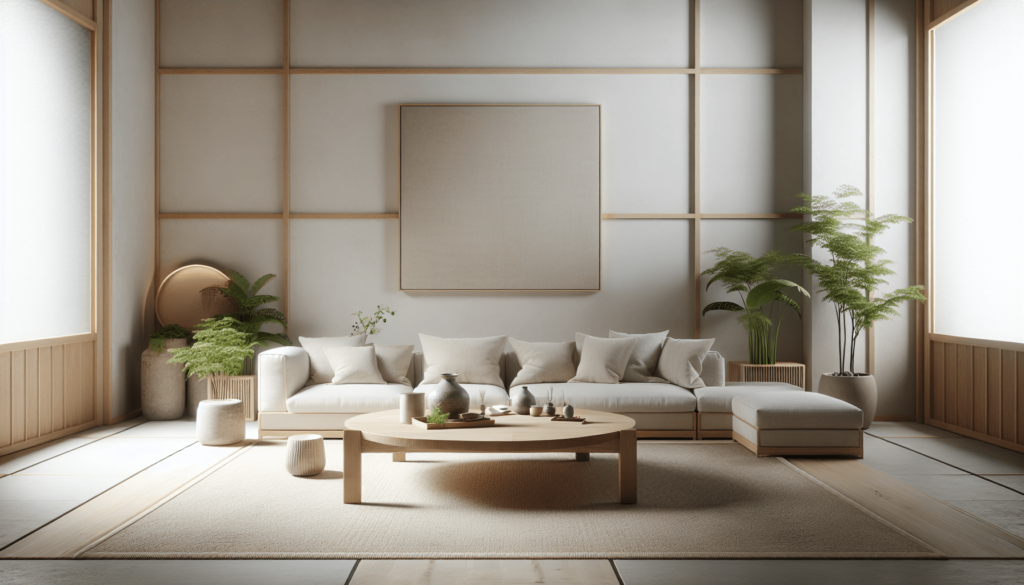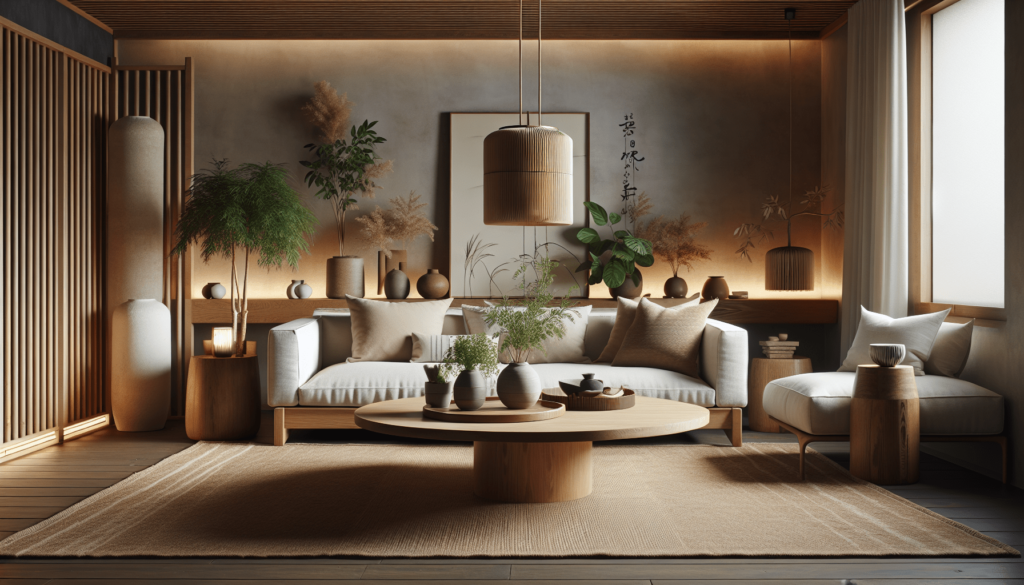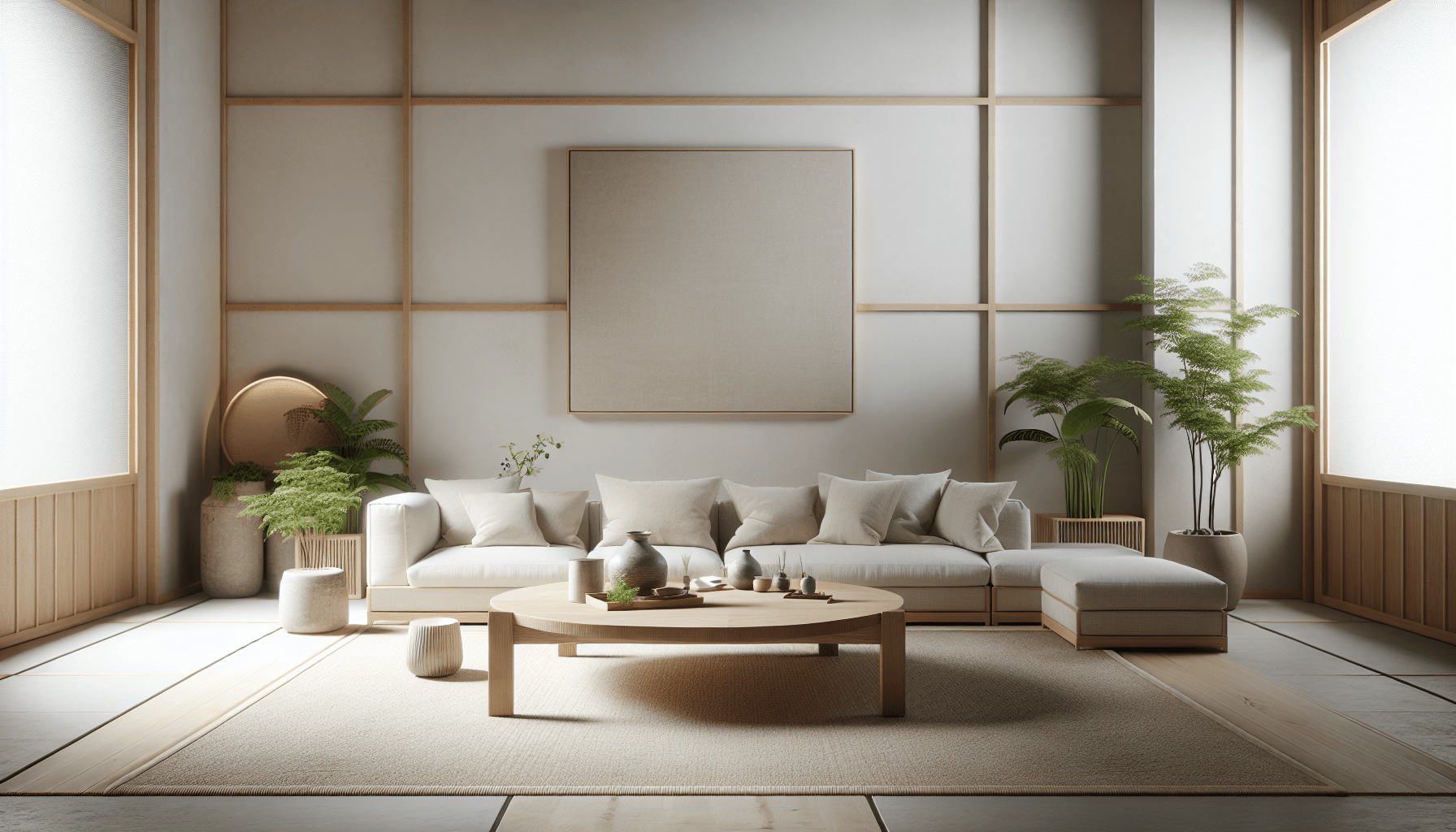How do you mix and match Japandi-style furniture pieces? This design style, merging Japanese minimalism with Scandinavian functionality, provides a calming yet chic aesthetic that can transform your space. In this guide, you’ll learn how to blend different Japandi elements to create harmony and style in your home.
Understanding Japandi Style
To successfully mix and match furniture pieces, it’s essential first to understand what Japandi style entails. This design approach reflects simplicity, natural materials, and a neutral color palette. It values craftsmanship and functionality, which creates a serene atmosphere.
Key Characteristics of Japandi Style
Japandi is a fusion of two distinct styles, each with its unique characteristics. Here are the key elements that define Japandi design:
- Emphasis on Functionality: Every piece should serve a purpose. Functionality is prioritized without sacrificing aesthetic appeal.
- Natural Materials: Wood, bamboo, and linen are common materials used in Japandi-style furniture, offering a warm, organic feel.
- Neutral Color Palette: Soft hues like beige, white, gray, and pastels create a calming environment.
- Craftsmanship: Attention to detail and quality craftsmanship are paramount, celebrating the beauty of well-made furniture.
Recognizing these characteristics will help you select the right pieces to achieve that perfect balance in your space.
Selecting the Right Furniture Pieces
When mixing and matching Japandi pieces, start by focusing on furniture selection. Each piece should resonate with the core principles of the Japandi style.
Choosing Furniture Types
Different furniture types can bring various functions to your home while maintaining the aesthetic. Here are some essential furniture types to consider:
| Furniture Type | Description |
|---|---|
| Sofas | Look for simple lines and natural fabrics. |
| Coffee Tables | Choose low-profile tables with minimalist designs. |
| Chairs | Opt for ergonomic shapes, combining comfort and style. |
| Storage Solutions | Consider open shelving or modular units that provide organization without visual clutter. |
| Dining Tables | Select wooden tables with clean lines to bring warmth to your dining area. |
Remember to focus on quality and functionality as you choose pieces.
Incorporating Styles from Both Cultures
Since Japandi style blends Japanese and Scandinavian elements, it’s important to recognize and incorporate pieces from both traditions. For instance, you might choose a Scandinavian-style sofa paired with a Japanese accent chair to create a harmonious balance.

Color Coordination
Color is a crucial factor when mixing and matching furniture pieces. Maintaining a cohesive palette helps create a smooth flow throughout your space.
Neutral Base Colors
Starting with neutral base colors allows you to build your design on a solid foundation. Consider the following suggestions for your primary color choices:
- Whites and Off-Whites: These colors brighten up the space and promote a sense of spaciousness.
- Warm Grays: These shades complement wooden elements beautifully without overwhelming the room.
- Soft Beiges and Taupes: These neutral tones provide warmth and a feeling of comfort.
Adding Accents
Once you’ve established a neutral base, you can introduce some subtle accent colors. Here are a few ideas:
- Earthy Tones: Soft greens, browns, or muted blues can add a touch of nature.
- Pastel Shades: Light pinks or soft yellows can introduce a gentle pop of color without clashing.
- Deep Jewel Tones: A touch of navy or emerald can bring sophistication when used sparingly.
Creating Contrast
When mixing colors, you may also want to create contrast for visual interest. Using darker shades against lighter ones can help emphasize specific elements, ensuring that your furniture pieces stand out without overwhelming the simplicity of Japandi design.
Texture and Material Mixing
Mixing different textures and materials can add depth to your interior design. The key is to maintain harmony among the various elements while incorporating different tactile experiences.
Wood and Fabric
Wood is a predominant element in Japandi style, showcasing the beauty of nature. When mixing furniture, consider pairing various wood finishes. For instance:
| Wood Type | Characteristics |
|---|---|
| Light Ash | Provides a Scandinavian feel, lightening the space. |
| Dark Walnut | Adds sophistication and warmth. |
| Bamboo | Introduces a unique texture and eco-friendliness. |
Pairing wooden pieces with soft fabrics creates a comfortable atmosphere. Think about combining a wooden coffee table with a plush fabric sofa for a cozy yet stylish look.
Incorporating Different Textures
Textures play a significant role in creating a dynamic environment. Here are some suggestions to consider:
- Smooth Finishes: Tiles or glass surfaces can contrast nicely with rougher textures like woven rugs.
- Soft Fabrics: Throws and cushions made of cotton or linen add warmth and comfort without cluttering the design.
- Natural Fibers: Use jute or wool rugs to bring a layer of texture to the space.

Balancing Proportions and Scale
Achieving balance is essential in Japandi design. Keeping proportions and scale in mind ensures that each piece works harmoniously together.
Understanding Scale
Scale refers to the size of furniture in relation to your space. Here’s a helpful guide:
- Large Spaces: If you have a spacious area, consider larger, statement pieces like oversized sofas or dining tables.
- Small Rooms: In smaller spaces, opt for sleek, streamlined furniture that doesn’t overwhelm the room.
Proportional Arrangements
When arranging multiple furniture pieces, aim for proportionality. Here’s how you can achieve this:
- Vary Heights: Combine high-backed chairs with lower-profile sofas to create a visual rhythm within the room.
- Group Furniture: Arrange pieces in clusters or zones. For example, place a coffee table and chairs in one area and a desk with a chair in another.
By considering both scale and proportion, you can create a balanced space that feels cohesive and inviting.
Inviting Nature Indoors
One of the main philosophies of Japandi design is the connection between nature and indoor spaces. This can be achieved through carefully selected furniture and décor.
Incorporating Plants
Adding greenery enhances the tranquility of your space. Here’s how to do it effectively:
- Potted Plants: Choose natural clay pots to complement wooden furniture. Plants like ferns or snake plants lend a touch of life.
- Hanging Plants: Consider ceiling or wall-mounted planters to save space and add interest without cluttering surfaces.
- Natural Arrangements: Fresh flowers in minimalistic vases can provide a splash of color while maintaining simplicity.
Large Windows and Natural Light
Natural light is crucial for a Japandi-style home. Wherever possible, try to maximize sunlight in your space. Here are a few tips:
- Use Sheer Curtains: They allow light to filter through while maintaining privacy.
- Mirrors: Position mirrors to reflect light and create the illusion of larger spaces.
Incorporating these elements not only aligns with Japandi principles but also makes your home more inviting and vibrant.
Personal Touches and Accessories
While minimalism is key, adding personal touches ensures that your home reflects your personality. Here’s how to achieve a balance between minimalism and individuality.
Selecting Art and Decor
Choose decor that speaks to you and complements your design. Here are some ideas:
- Framed Artwork: Integrate minimalist or nature-themed art pieces in understated frames.
- Textiles and Rugs: Neutral or muted rugs can add warmth without introducing chaos.
- Ceramics and Pottery: Handmade items, such as vases, can serve as unique focal points.
Creating Meaningful Arrangements
Arrange your personal items thoughtfully to avoid clutter. Here are a few suggestions:
- Grouped Displays: Gather smaller items in groups, creating visually engaging arrangements without overwhelming surfaces.
- Layered Textures: Combine different items, like books and decorative objects, on shelves to add depth while remaining organized.
Finding the right balance between minimalism and personal expression can bring warmth and individuality to your Japandi space.
Finally, Embracing Minimalism
As you mix and match Japandi-style furniture pieces, it’s essential to embrace the minimalist philosophy at the core of this aesthetic. Strive to keep your environment clutter-free while showcasing beautiful pieces that resonate with you.
Decluttering Tips
Maintaining a minimalist space often requires ongoing decluttering. Here are a few techniques to help:
- Regularly Assess Items: Periodically go through your belongings. If something doesn’t bring you joy or serve a purpose, consider letting it go.
- One In, One Out: To maintain balance, adopt the habit of removing one item when you bring a new one in.
- Utilize Storage: Invest in creative storage solutions that allow you to keep essential items without visual clutter.
Fostering a Peaceful Environment
Ultimately, mixing and matching Japandi-style furniture pieces is about creating a peaceful environment that feels right for you. As you embrace both design principles and personal elements, remember to prioritize function and tranquility.
By maintaining an organized, serene space, you’ll not only enjoy the beauty of your Japandi furnishings but also cultivate a sense of calm in your everyday life.
Conclusion
Mixing and matching Japandi-style furniture pieces can be a fulfilling endeavor. By understanding the fundamentals of Japandi design, selecting the right pieces, and embracing minimalism, you can create a home that reflects your taste and promotes tranquility. Your space can become a harmonious retreat that celebrates simplicity, quality, and nature.

